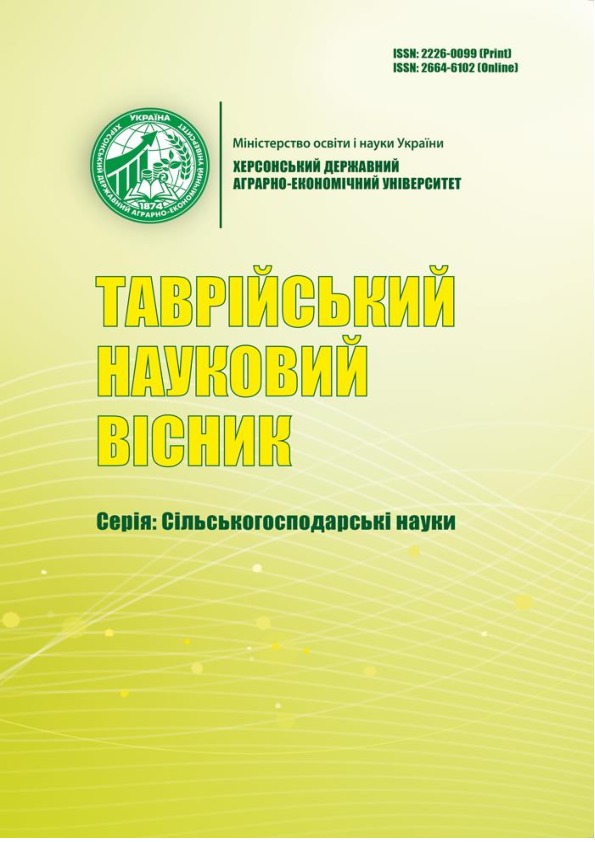id: 33980
Title: Influence of fertilizers on indicators of the agro-ecological condition of the soil
Authors: Tkachuk O.P., Verhelis V.I.
Keywords: siderates, agroecological condition of the soil, nutrients
Date of publication: 2023-10-16 13:36:38
Last changes: 2023-10-16 13:36:38
Year of publication: 2023
Summary: The work is devoted to the study of the expediency of using carrion siderates for indicators of the agro-ecological condition of the soil. The research was intended to study the influence of carrion siderates, which spontaneously sprouted after the loss of crop yields and disking of the field, on indicators of productivity, product quality and its ecological safety of corn and sunflower, as the next crops in the crop rotation, as well as on indicators of fertility and agro-ecological condition of soils. Experimental research was carried out in the conditions of FG “Zorya Vasylivka” of the Tyvriv district of the Vinnytsia region on gray podzolized soils. Provision of favorable agrotechnical conditions for the growth of fallow siderates of winter wheat, spring barley, peas and winter rape can provide them with a biological mass of 23.1 –33.0 t/ha at a height of 22–64 cm during the 63–91 days of their vegetation. The most productive can to be ciders of winter rapeseed and peas. It was established that the biological mass of carrion siderates worked into the soil helps to increase the content of humus by 0.11–0.14 %, alkaline hydrolyzed nitrogen – by 1.7–7.1 %, exchangeable potassium – by 27.4–32.2 %. The highest content of humus in the soil is provided by siderates of peas and winter rapeseed – 2.44 % each, alkaline hydrolyzed nitrogen – 127 mg/kg – peas, mobile phosphorus – 520 mg/kg – winter wheat, exchangeable potassium – 230 mg/kg – winter rapeseed, the largest number of absorbed bases – 16.8 mg-eq./100 g – peas, the lowest hydrolytic acidity – 1.60 mg-eq./100 g – winter wheat, the highest pH value 5.85 – spring barley. It was determined that the cultivation of siderates leads to an increase in the content of mobile heavy metals in the soil by 17.2–24.3 %, cadmium – by 10.0–14.3 %, copper – by 17.6–22.2 %, zinc – by 34.7–39.9 %, compared to the version without siderates. Among the studied siderates, the lowest content of lead in the soil – 1.28 mg/kg and cadmium – 0.20 mg/kg is provided by winter rapeseed; copper – 0.51 mg/kg – peas and winter rapeseed; zinc – 1.73 mg/kg – spring barley.
URI: http://repository.vsau.org/repository/getfile.php/33980.pdf
Publication type: Статті у наукових фахових виданнях України (Copernicus та інші)
Publication: Таврійський науковий вісник. Серія: Сільськогосподарські науки. 2023. № 132. С. 210-224. DOI: https://doi.org/10.32782/2226-0099.2023.132.26
In the collections :
Published by: Адміністратор
File : 33980.pdf Size : 1119938 byte Format : Adobe PDF Access : For all

| |
|
|